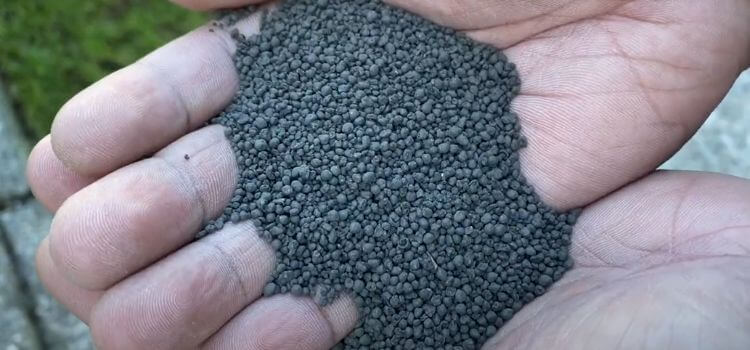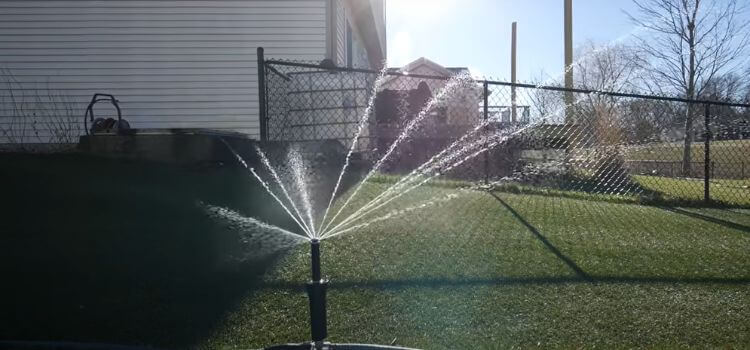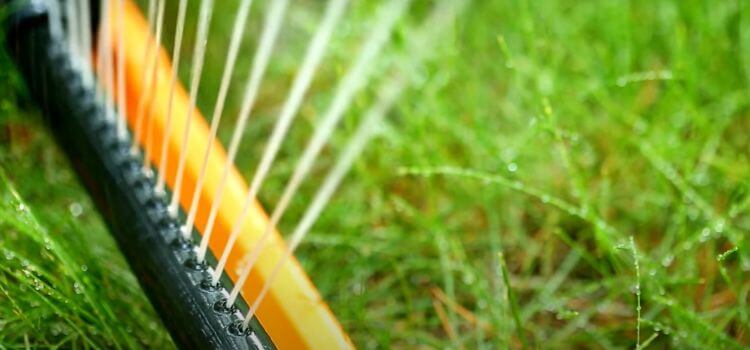As an Amazon Associate, I earn from qualifying purchases.
Winter fertilizer should be watered immediately after application to help it infiltrate the soil effectively. Watering helps activate the nutrients and promotes better absorption by the grassroots.
This crucial step ensures that the fertilizer can work efficiently to nourish and strengthen the lawn during the dormant winter months. Proper watering also helps prevent any potential burning of the grass from the fertilizer. By following this simple practice, you can ensure that your lawn receives the maximum benefit from the winter fertilizer application.
I Remember to water thoroughly but avoid over-saturating the lawn to maintain a healthy balance.
Importance Of Winter Fertilizer
Winter fertilizer is crucial for a healthy spring lawn. It provides essential nutrients that protect grass during cold months and help lawns thrive once winter passes.
Nutrient Absorption In Cold Weather
Grassroots absorb nutrients slowly in cold weather. Winter fertilizer is designed to release nutrients at a rate that matches this slower absorption, ensuring your lawn gets what it needs throughout winter.
- Steady nutrient release keeps grass healthy.
- Prevents nutrient loss during frosts and thaws.
Promoting Root Growth
Winter fertilizer is rich in potassium and phosphorus. These elements are vital for strong root development, which means a strong lawn in spring.
- Potassium strengthens grass against cold and disease.
- Phosphorus supports root growth during cool months.

Factors Affecting Fertilizer Absorption
Understanding how plants absorb fertilizer is crucial during winter. Several key factors play a role in this process.
Soil Moisture Levels
Soil moisture greatly influences fertilizer uptake. Dry soil can hinder this process, making water crucial after applying fertilizer. A moist soil environment helps dissolve the fertilizer, allowing nutrients to seep into the root zone where plants can access them.
- Wet soil: Promotes quick nutrient release.
- Dry soil: May lock nutrients, preventing absorption.
Check soil moisture using a simple test:
- Press a screwdriver into the soil.
- If it goes in easily, the soil has good moisture.
- If not, consider watering before fertilizing.
Temperature Variations
Temperature also affects how well plants can absorb nutrients. Cold weather can slow down or even stop this process, while warmth, on the other hand, can enhance it.
| Temperature Range | Effect on Fertilizer Absorption |
|---|---|
| Below 50°F (10°C) | Nutrient uptake slows significantly. |
| 50°F to 70°F (10°C to 21°C) | Optimal range for nutrient uptake. |
Keep track of seasonal temperatures and adjust your watering and fertilizing schedule accordingly. The right conditions ensure that your plants get the nutrients they need to thrive, even in colder months.
Effectiveness Of Dry Winter Fertilizer
The right winter fertilizer can do wonders for your lawn. Understanding the effectiveness of dry winter fertilizer is key to a lush yard come spring.
Slow-release Formulas
Dry winter fertilizers often contain slow-release nutrients, which means they break down over time. Thus, your lawn gets a steady supply of what it needs to thrive, even under a blanket of snow.
- Grassroots absorb nutrients as they need them.
- There’s less risk of nutrient run-off with slow-release formulas.
- These fertilizers work with the natural growth cycle of your lawn.
Nutrient Retention In Soil
When you apply dry winter fertilizer, the soil holds onto the nutrients until your grass is ready to use. Here’s why nutrient retention matters:
- Improves soil health over time
- Prevents wastage of fertilizer
- Ensures a strong start for grass in spring
No immediate watering means the nutrients stay put, even in freezing temperatures. This way, your lawn gets all it needs to emerge healthy and green when winter ends.
Importance Of Watering Winter Fertilizer
Watering winter fertilizer plays a key role in lawn care. It helps plants absorb nutrients. Proper watering is vital even in cold months. Let’s discuss why it’s essential.
Enhancing Nutrient Uptake
Water helps fertilizer dissolve. It lets plants take in nutrients. Without water, fertilizer can’t move into the soil. Plants need this to grow strong.
Roots absorb better with moisture. Watering helps roots get nutrients. This keeps your lawn healthy in winter.
Preventing Nutrient Leaching
Rain can wash away nutrients. If you don’t water your fertilizer, rain might leach it away. This means your lawn won’t get food.
The right amount of water is crucial. Too much can harm, but just enough will prevent leaching. This balance keeps nutrients in the soil.
Water fertilizer when the ground is not frozen. This ensures nutrients stay put. It helps your lawn thrive.

When To Water Winter Fertilizer
Knowing when to water winter fertilizer is crucial for a lush lawn. Proper watering helps nutrients reach the roots. Let’s explore the best timing and frequency for watering your winter fertilizer.
Timing After Application
Water your lawn within 24 hours of fertilizer application. This step kickstarts the nutrient absorption process. Early morning is the best time. This allows the water to penetrate deeply without quick evaporation.
Frequency Of Watering
After the initial watering:
- Maintain a consistent watering schedule.
- Aim for 1 to 1.5 inches of water per week.
- Measure with a rain gauge or empty tuna cans.
- Keep soil moist but not soaked.
- Avoid waterlogging to prevent nutrient runoff.
- Adjust based on rainfall and soil type.
Best Practices For Watering Winter Fertilizer
Applying winter fertilizer is key to a lush lawn come spring. Watering practices are just as important as the fertilizer itself. Proper watering ensures nutrients reach the roots without causing damage from the cold.
Proper Irrigation Techniques
Timing and technique matter for winter watering. Here’s how to do it right:
- Water early in the day to allow absorption before the temperature drops.
- Use a pulsating sprinkler that sends out water horizontally. It prevents ice formation on grass blades.
- Be consistent with the water volume. Your lawn needs a steady amount.
Remember, the goal is to moisten the soil, not soak it. This helps roots take in the fertilizer.
Avoiding Overwatering
Too much water in winter can harm your lawn. Follow these tips to prevent it:
- Check the soil before watering. It should not be frozen or waterlogged.
- Measure rainfall with a rain gauge. Subtract any rain from your watering schedule.
- Observe your lawn for signs of excess moisture, like puddles or spongy grass.
Smart watering now prepares your lawn for a green revival in spring.
Impact Of Watering On Plant Health
Winter fertilizer plays a key role in preparing plants for a healthy spring. Proper watering after application is crucial. It helps plants absorb nutrients effectively. Let’s explore the impact of watering on plant health during the cold months.
Avoiding Frost Damage
Applying winter fertilizer is a delicate process. Watering is vital to avoid frost damage. Frost can harm plant cells and roots. Light watering after fertilizing helps protect against sudden temperature drops. Here’s why:
- Insulation: Moist soil holds heat better than dry, providing a layer of insulation.
- Root protection: Water helps nutrients reach the roots, strengthening them against frost.
Preventing Salt Buildup
Salt buildup from fertilizers can damage plants. It pulls water from plant roots, causing dehydration. Watering helps dissolve excess salts, preventing this buildup. Here’s how to keep your garden safe:
| Step | Action |
|---|---|
| 1 | Apply fertilizer as directed. |
| 2 | Water lightly to help soil absorb the fertilizer. |
| 3 | Check soil moisture regularly to maintain optimal levels. |
Frequently Asked Questions
Not watering after fertilizing can lead to fertilizer burn, stressing plants by causing leaf scorch and root damage. This neglect inhibits nutrient absorption and can stunt growth or even kill the plants. Regular watering ensures nutrients dissolve and spread effectively through the soil.
Granular fertilizer should ideally be watered within 24 hours of application to prevent burning the grass and to activate the nutrients.
Apply winterguard fertilizer in early fall or late summer, between August and November, before the first frost. Adjust timing based on your specific climate zone for best results.
Fertilizer can typically remain effective for up to four weeks without rain. For best results, water it in manually if no rain occurs within a few days after application. This helps activate the nutrients and encourages absorption by the soil.
Conclusion
In conclusion, winter fertilizer’s effectiveness hinges on proper application and moisture availability. While natural precipitation often suffices, supplemental watering ensures optimal nutrient absorption. Remember, a well-fed lawn in winter sets the stage for lush spring growth. Prioritize your lawn’s health; consider the weather and water accordingly for best results.

